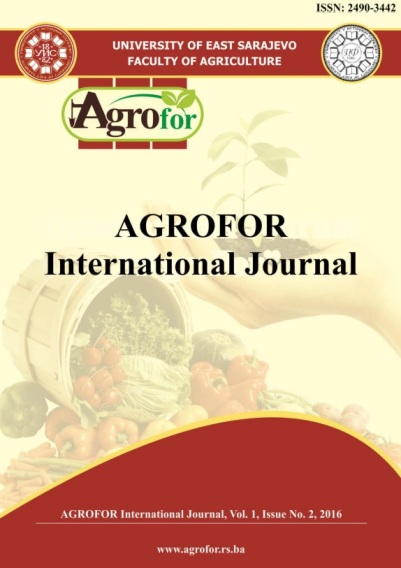IMPORTANCE OF THE BUFFER ZONE OF THE WATER INTAKE FOR THE MAINTENANCE OF AGROSYSTEM PHYTODIVERSITY
DOI:
https://doi.org/10.7251/AGRENG1602103GAbstract
A change of the agricultural policy in Poland after 1990 caused significant changes
in the structures of the agricultural landscape functioning in the area of West
Pomerania (Pomorze Zachodnie). The field fragments, which had been in a form of
barren land in the protective zone of Miedwie Lake for 30 years, were chosen for
the detailed phytosociological studies. The aim of the current study was the
analysis of anthropogenic impacts on flora in the surveyed terrain. In the studied
area, the values of the synanthropization indices of the flora were as follows:
synanthropization - 2.58, apophytisation - 2.0, anthropophytisation - 0.56,
archaeophytisation - 0.38, kenophytisation - 0.16, and fluctuation changes in the
flora - 0.04. It is assumed that the larger the share of nonsynanthropic species, the
larger the naturalness of the flora inthese biotopes. The large values for the
apophytisation index showed degradation in natural habitats A large share of
anthropophytes indicates dominance of the processes of a decline in native species
in a given biotope, which means that there are disturbances of the ecological
balance of a given ecosystem. The 30 year cessation of agricultural use around the
lake resulted in the improvement of the chemical state of waters. A significant role
in stopping water runoff played dense sodification of the surveyed area. The state
of the flora found in this area was influenced by both natural and anthropogenic
factors. This is proved by thedominance of synanthropic over nonsynanthropic, and
spontaneophytes over anthropophytes species.

